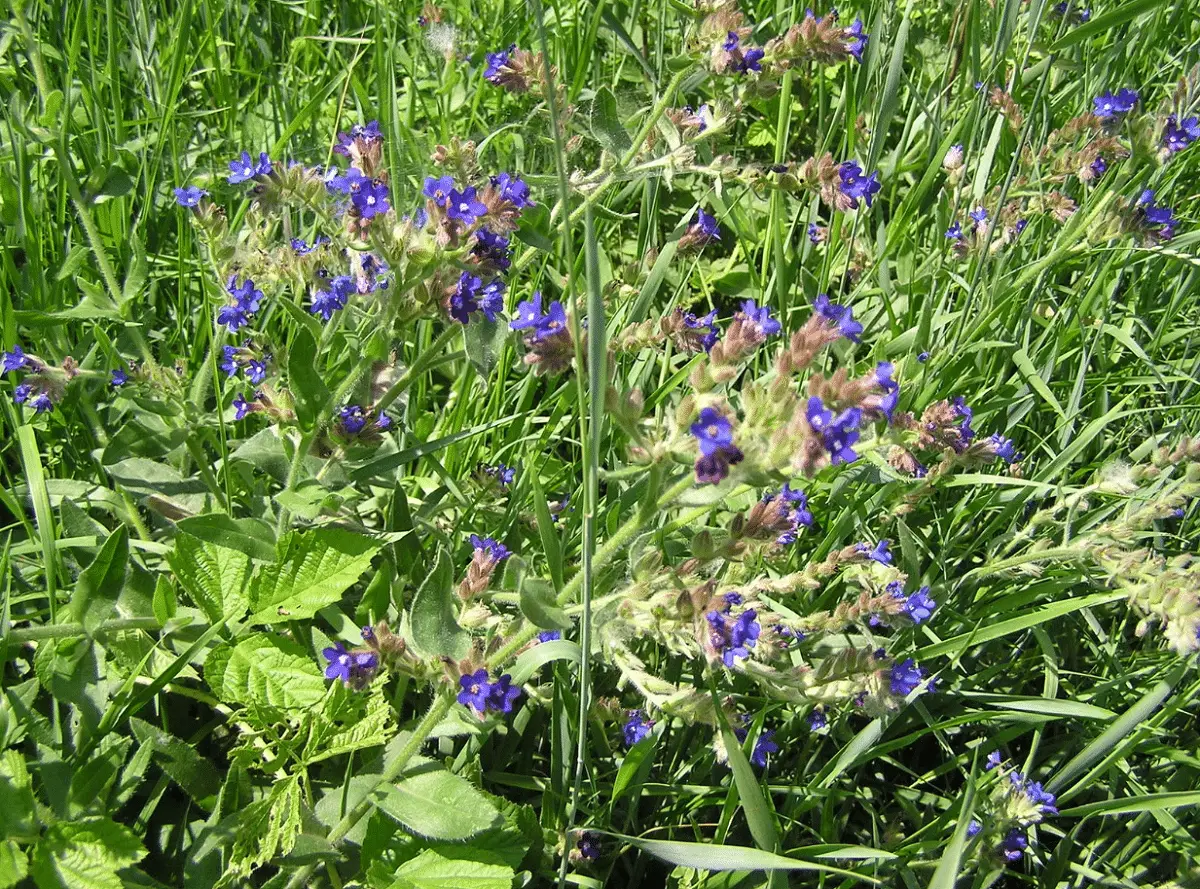
The Anchusa officinalis is the name that this plant has adopted in the botanical field. However, is well known by a wide variety of names It varies according to the place where it is located as well as the culture of the place.
The truth is that it is not only simply a plant that will look great in your garden (since this is the goal of the vast majority), but it will help you deal with some health problems that we will mention later.
General data of the Anchusa Officinalis

For now, we will start the article by talking a little about the general data of the plant, then we will move on to the most outstanding features and at the end we will mention those data that will be of great use to you.
As we mentioned well, the plant has about 15 different namesbut the most common and the one that is easiest to remember is ox tongue. Now, ox tongue is nothing more than an annual type species that stands out a lot for its showy flowering. Although it has annual characteristics, it can also be biennial.
Today there is no exact record of the plant’s native placebut it is easy to locate them in vacant lots, hillsides that are sunny, olive groves, vineyards and similar places.
Although it is believed that its origin is in West Asia. It is worth mentioning that the pollination procedure in flowers is through something known as anthophiles. Although it is not uncommon for it to attract pollinating animals, since the plant itself has a pleasant and striking aroma.
The Anchusa officinalis it is annual or biennial of the plant that grows from 50 to 70 cm, with plush, cruelly, elongated leaves and blue, purple or white flowers. Flowering and harvesting will take place from June to October, except from the root harvest, which takes place in autumn.
Features
Height
At this point there is not much to mention or highlight, but in this sense, that you know that this plant can grow 80 cm Tall. This height is the maximum that it can reach provided the conditions are suitable, but in general, its height reaches between 30 and 60 cm.
Flores
It is the main attraction of the plant for its purple color, not to mention that the flowers have a shape very similar to that of a bell and its dimensions are 8 to 12 mm wide. It is worth mentioning that each flower has 5 lobes.
Leaves
The leaves are extremely simple and if you get close enough, you will notice that they have small hairs all over their surface. In the same way, the leaves in this species are alternated and have winged petioles.
Fruit
Surprisingly it has the ability to produce fruit, although these cannot be consumed by people. However, some have found a medicinal use for it.
Needs and cares
While it is true that the plant itself has the ability to grow in soils with clay characteristics, regardless of the type of soil, the plant requires an acidic pH levelalthough it can also support a soil with an alkaline or neutral pH level.
When this species is planted, you have to try to have the soil moistso watering is extremely important and you don’t have to wait for it to dry completely to start watering.
Although in terms of risks, the number of times to proceed will depend on factors such as the sun exposure, ambient temperature, soil type or textureAmong other.
Plagues and diseases
Sadly it is a plant prone to certain pests and diseases. Such is the case of spiders and the cocoideos. However, this is not all, as it is also prone to being attacked by fungi.
Uses of the plant

Arguably, this is an aspect of the plant itself that many will benefit from having in their garden, as has some medicinal uses.
Among them we can mention:
- Can be effective for treating smallpoxrelieve pain caused by bruises and rheumatic pain.
- It is effective for dealing with insect bites and treating diarrhea naturally.
- As well it is effective against cough and jaundiceas well as problems caused by gallstones and multiple diseases that are located in the urinary tract.
In the event that you plan to use the benefits of this plant, know that on an external physical level you will have to prepare a kind of ointment.
On the other hand, if the idea is to treat the conditions that were mentioned last, you will have to make a tea with the plant where you will have to use 100 grams of dried leaves or failing that, use the dried root and add it to a liter of boiled water.
